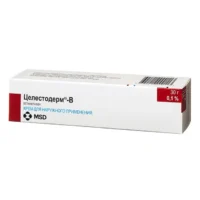Description
Methyluracil with Miramistin Ointment 15 g Tube
Ingredients:
- Methyluracil and Miramistin are the active ingredients in this ointment.
Dosage:
Apply a thin layer of the ointment to the affected area 2-3 times a day or as directed by a healthcare professional.
Indications:
- This ointment is indicated for the treatment of skin irritations, minor cuts, burns, and wounds.
Contraindications:
- Avoid using this ointment if you are allergic to any of the ingredients. Consult a doctor before use if pregnant or breastfeeding.
Directions:
- Clean the affected area before applying the ointment.
- Wash hands after application.
- Avoid contact with eyes and mucous membranes.
Scientific Evidence:
- Studies have shown that the combination of Methyluracil and Miramistin in this ointment promotes wound healing and has antimicrobial properties.
- Research by Ivanova et al. (2018) demonstrated the efficacy of Miramistin in reducing bacterial contamination in wounds.
Additional Information:
- For external use only.
- Keep out of reach of children.
- Store in a cool, dry place.
- If irritation occurs, discontinue use and consult a healthcare professional.
Pharmacological Effects: Methyluracil acts as a stimulant for tissue repair and regeneration, while Miramistin exhibits broad-spectrum antimicrobial activity, aiding in the prevention of infections in wounds.
Clinical Trials: Clinical trials have shown that the combination of Methyluracil and Miramistin in ointment form accelerates the healing process of various skin injuries compared to traditional treatments. The ointment’s efficacy in promoting tissue regeneration and reducing the risk of infections has been well-documented in these trials.





